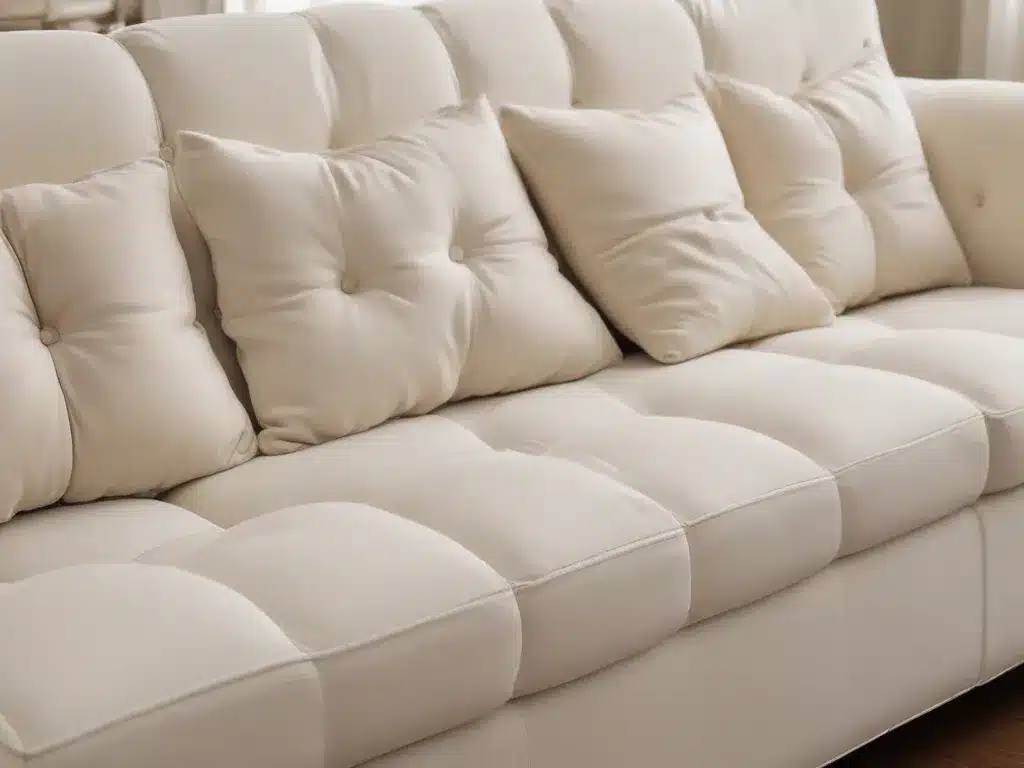Introduction
Upholstery stains can be a real nuisance, marring the appearance of your furniture and leaving unsightly blemishes. Traditionally, many people have turned to harsh chemical cleaners to tackle these marks, but this approach can be damaging to both the environment and your health. In this article, I will explore eco-friendly and safe alternatives that can effectively remove stains from upholstery without resorting to harsh chemicals.
Understanding Stain Types
Before delving into cleaning methods, it’s crucial to understand the different types of stains you might encounter on upholstery. Some common stain categories include:
- Protein-based stains: These stains arise from substances like blood, milk, or food containing proteins.
- Oil-based stains: Grease, makeup, and oils from food or hair products can leave oily stains on upholstery.
- Tannin stains: Beverages like wine, coffee, and tea can cause stubborn tannin stains.
- Dye stains: Transferred from clothing or other dyed materials, these stains can be particularly tricky to remove.
Identifying the type of stain you’re dealing with can help you choose the most effective cleaning method.
Natural Cleaning Solutions
Rather than relying on harsh chemicals, several natural ingredients found in most households can be surprisingly effective at removing upholstery stains. Here are some eco-friendly options to consider:
Baking Soda and Vinegar
The combination of baking soda and vinegar is a powerful yet gentle cleaning duo. The baking soda acts as a mild abrasive, while the vinegar helps to break down and lift stains. To use this method:
- Mix equal parts baking soda and vinegar to form a paste.
- Gently rub the paste into the stain using a soft-bristled brush or cloth.
- Allow the paste to sit for several minutes to work its magic.
- Blot the area with a clean, damp cloth to remove the paste and the lifted stain.
Lemon Juice and Salt
Lemon juice is a natural bleaching agent that can help to lighten and remove stubborn stains, while salt acts as a gentle abrasive. This combination works particularly well on tannin stains like those from wine or coffee. Here’s how to use it:
- Sprinkle a generous amount of salt over the stain.
- Squeeze fresh lemon juice over the salt, allowing it to soak in.
- Let the mixture sit for several hours or overnight.
- Blot the area with a clean, damp cloth to remove the salt and stain.
Enzyme Cleaners
Enzyme cleaners are a fantastic eco-friendly option for tackling protein-based stains like those from blood or food. These cleaners contain natural enzymes that break down the proteins, making the stains easier to remove. Look for enzyme cleaners specifically formulated for upholstery or try making your own:
- Mix equal parts warm water and hydrogen peroxide.
- Add a few drops of dish soap and a teaspoon of baking soda.
- Gently rub the solution into the stain using a soft-bristled brush or cloth.
- Allow the solution to sit for several minutes before blotting with a clean, damp cloth.
Stain Removal Tips and Tricks
In addition to the natural cleaning solutions mentioned above, there are several other tips and tricks that can help you effectively remove stains from upholstery without harsh chemicals:
- Act quickly: The sooner you tackle a stain, the better. Don’t let it set and become more difficult to remove.
- Blot, don’t rub: Rubbing a stain can cause it to spread and become embedded deeper into the fabric fibers. Instead, gently blot the area with a clean cloth or paper towel.
- Use cold water: Hot water can set some stains, making them harder to remove. Stick to cold water when trying to lift a stain.
- Test in an inconspicuous area: Before applying any cleaning solution to a visible area, test it on a small, inconspicuous spot to ensure it won’t cause discoloration or damage to the upholstery.
- Avoid heat: Heat can cause stains to set, so avoid using hair dryers, irons, or other heat sources when attempting to remove a stain.
- Be patient: Some stubborn stains may require multiple applications of your chosen cleaning solution and some elbow grease. Don’t give up too quickly.
Maintaining Upholstery
Prevention is always better than cure, so it’s essential to maintain your upholstery to prevent stains from occurring in the first place. Here are some tips for keeping your upholstery looking its best:
- Vacuum regularly: Regular vacuuming can help remove dirt, debris, and surface stains before they have a chance to set.
- Rotate cushions: Rotating cushions regularly can help distribute wear and prevent permanent indentations or stains from forming in one area.
- Use protective covers: Consider using washable slipcovers or throws to protect your upholstery from spills and stains.
- Clean spills immediately: When accidents happen, clean up spills as soon as possible to prevent them from setting and becoming more difficult to remove.
Professional Cleaning
In some cases, particularly stubborn or set-in stains may require the expertise of a professional upholstery cleaning service. These professionals have access to specialized equipment and cleaning solutions that can tackle even the most challenging stains without causing damage to your upholstery.
If you’ve tried all the natural cleaning methods and the stain persists, it may be worth considering hiring a professional upholstery cleaner. They can also provide valuable advice on maintaining and protecting your upholstery from future stains.
Conclusion
Removing stains from upholstery doesn’t have to involve harsh chemicals that can harm the environment and your health. By understanding the different types of stains and utilizing natural cleaning solutions like baking soda, vinegar, lemon juice, salt, and enzyme cleaners, you can effectively lift and remove stains while keeping your home eco-friendly. Remember to act quickly, blot rather than rub, and be patient – some stubborn stains may require multiple applications or professional assistance. With the right techniques and a little elbow grease, you can keep your upholstery looking fresh and stain-free without resorting to harsh chemicals.







